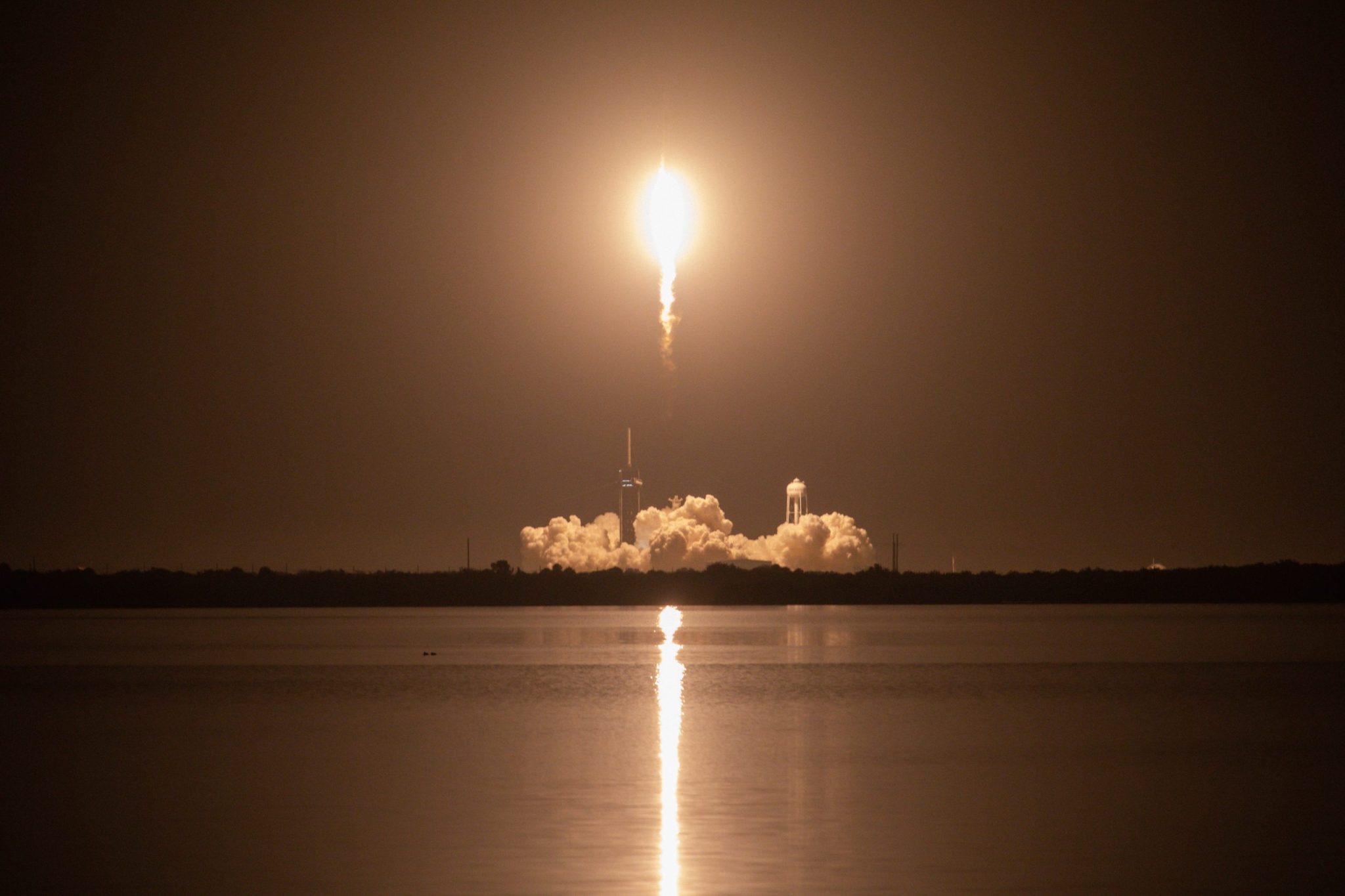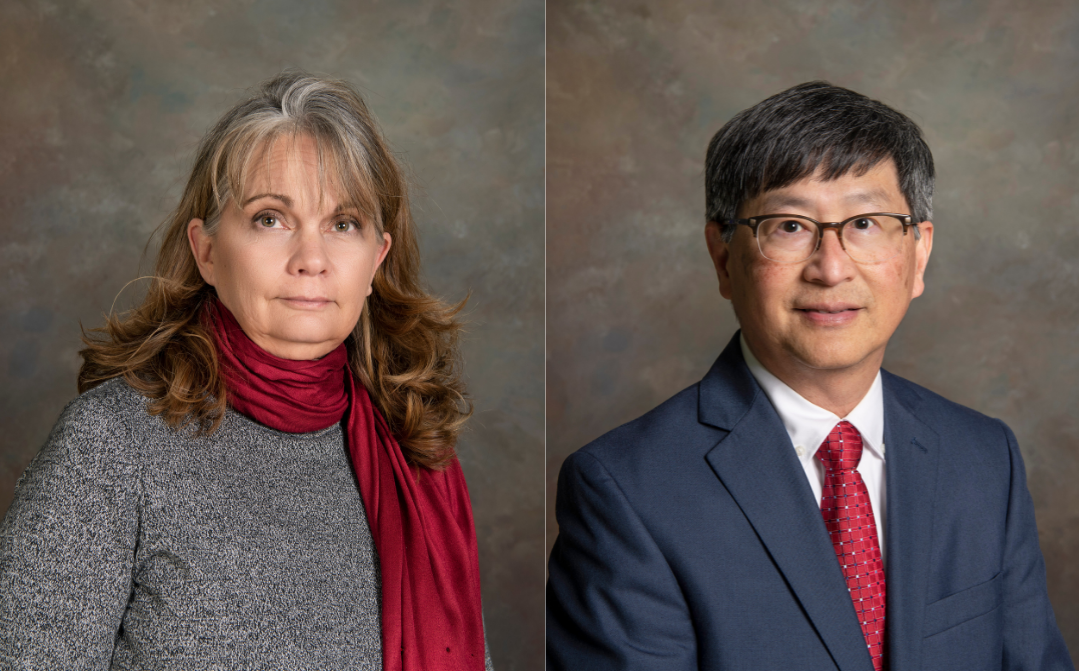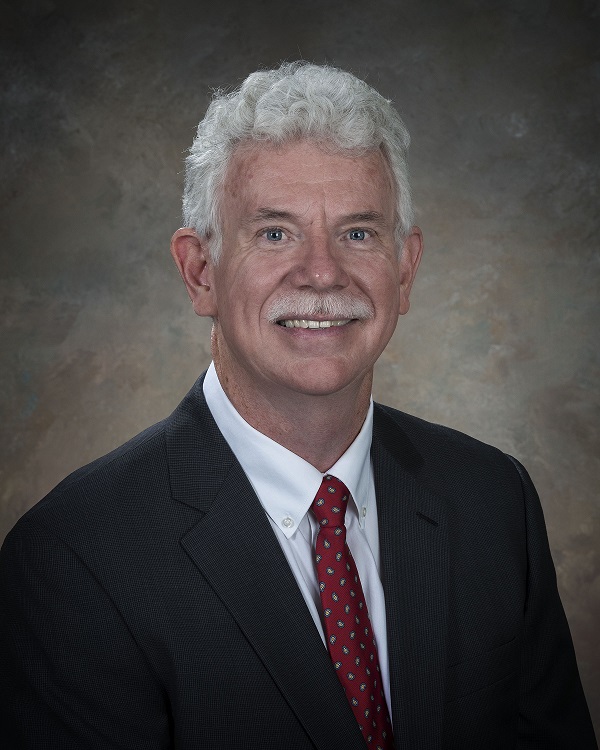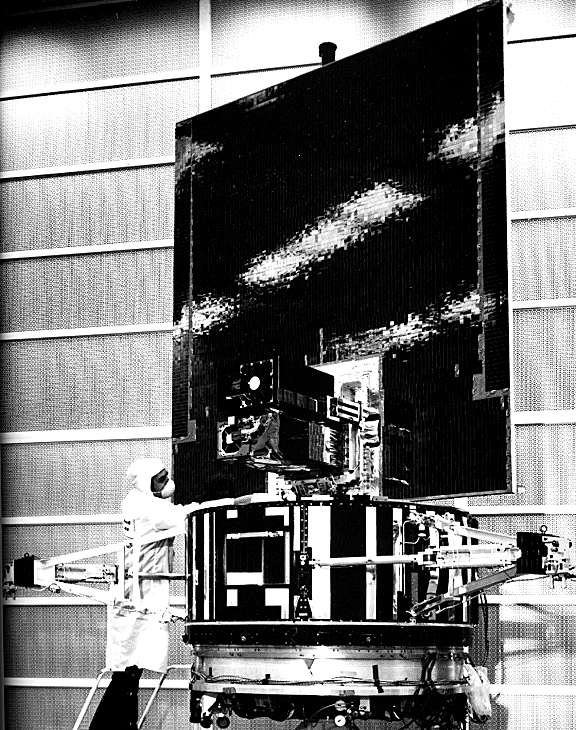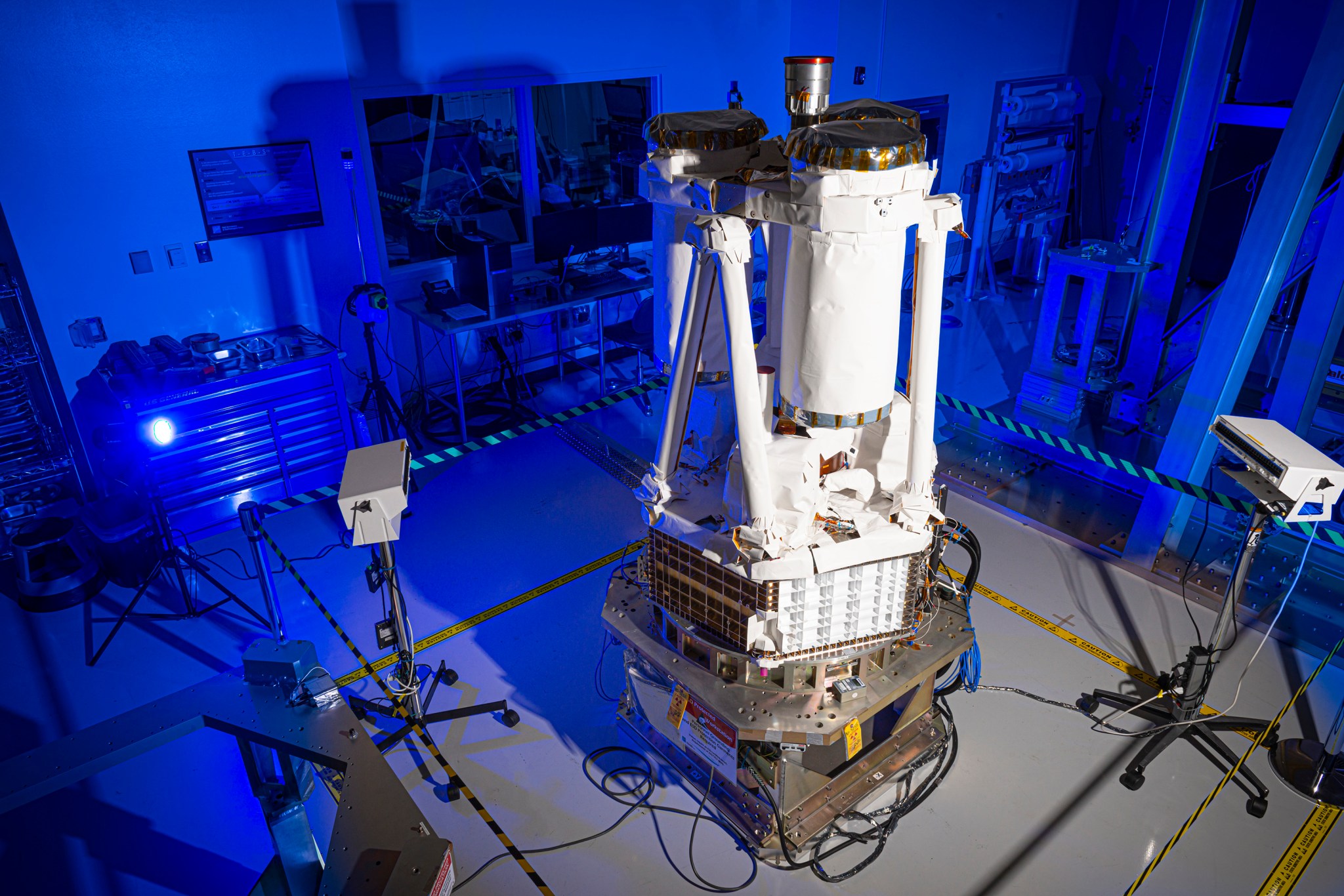Marshall Honors Outstanding Achievements at Virtual Awards Ceremony
NASA’s Marshall Space Flight Center held its Center Honor Awards virtual ceremony Nov. 16. The awards are presented in recognition of outstanding accomplishments and achievements each year. This year, there were 140 awards presented to individuals and 58 presented to teams for their vital contributions to the Marshall mission. Bob Cabana, NASA associate administrator, delivered the keynote address, focusing on the future of crewed space exploration and the supporting work that has been achieved at Marshall. “We’ve learned so much about how the human body reacts to long-duration missions and how to design and build reliable Environmental Control and Life Support Systems to keep our astronauts safe,” Cabana said. “All of which is vital to our Artemis plans. Additionally, through our research conducted on station in partnership with academia, the Center for Advancement of Science in Space, and our industry partners, we’ve developed new technologies and healthcare tools that improve life here on Earth for all of us.” See the complete roster of awards and recipients here. (NASA)
NASA’s SpaceX Crew-3 Astronauts Arrive at Space Station
Running more than 30 minutes ahead of schedule, the SpaceX Crew-3 astronauts docked to the International Space Station at 5:32 p.m. CST Nov. 11, less than 24 hours after launching from NASA’s Kennedy Space Center. NASA astronauts Raja Chari, Tom Marshburn, and Kayla Barron, and European Space Agency astronaut Matthias Maurer opened the hatch of their Crew Dragon spacecraft Endurance at 7:25 p.m. and participated in a welcome ceremony with their new Expedition 66 crewmates at 8 p.m.
On board to welcome them were fellow astronaut Mark Vande Hei, Expedition 66 Commander Anton Shkaplerov and Flight Engineer Pyotr Dubrov of Roscosmos. Joining the welcome ceremony from Earth were Kathy Lueders, NASA associate administrator for Space Operations, and Josef Aschbacher, European Space Agency director-general.
The Crew Dragon launched atop SpaceX’s Falcon 9 rocket from Launch Complex 39A at 8:03 p.m. Nov. 10.
“NASA’s partnership with SpaceX is not only critical for cutting-edge research, but also for international collaboration,” NASA Administrator Bill Nelson said. “The space station brings together nations around the world for the benefit of all.”
During their six-month stay aboard the orbiting laboratory, Chari, Marshburn, Barron, and Maurer will join the Expedition 66 crew in conducting a number of science and research investigations. Some of these include a food physiology experiment that will study the impacts of an enhanced spaceflight diet on astronaut health, a sensor that will test a set of LED beacons with which Astrobee free-flying robots will interact during formation flight maneuvers, and a Human Research Program project that will collect a set of core measurements related to human spaceflight risks from astronauts before, during, and after long-duration missions.
The Payload Operations Integration Center at NASA’s Marshall Space Flight Center is the agency’s primary space station science command post. The payload operations team coordinates all U.S., European, Japanese, and Canadian scientific and commercial experiments on the station, synchronizes payload activities of international partners, and directs communications between station crew members and researchers around the world.
Crew-3 is the third of six crew rotation missions NASA and SpaceX will fly as part of the agency’s Commercial Crew Program. This is the first flight for Chari, Barron, and Maurer, and the third for Marshburn, who flew on STS-127 and Expedition 34/35.
The commercial crew team at Marshall, led by Steve Gaddis, has a long working relationship with SpaceX, having worked with the commercial partner to improve safety and reliability of the Merlin engines, stage propulsion, Draco and SuperDraco thrusters, the abort and flight termination systems, structures, materials and processes, fracture control, and integrated performance analyses.
“Our team members did an excellent job supporting the Crew-3 mission,” Gaddis said. “Even though they made it look easy, our crew worked many challenging issues over the last four months to help ensure mission success. Their attitudes and teamwork were amazing!”
Winners Announced for Marshall New Technology Contest
By Tee Quillin
The Technology Transfer Office at NASA’s Marshall Space Flight Center recently selected winners for a contest held in summer 2021, awarding five cash prizes to civil servants who entered new technology reports with the most commercial potential. Commercialization experts carefully reviewed entries, which were judged based on their ability to transfer technology to commercial sector areas like automotive, manufacturing, sensors, materials and coatings, and health and medicine.
The goal of the New Technology Contest is to broaden the inventor pool at NASA, which could increase partnerships with cutting-edge technology entities. The contest both engages and incentivizes employees to utilize their creativity in the development of unique technical innovations.
“We’re very excited about the commercial potential of these new inventions and hope they will turn into future NASA spinoff success stories,” said Terry Taylor, chief of Marshall’s Technology Transfer Branch.
The technologies are currently patent-pending; therefore, only limited information can be shared at this time.
The winners, chosen from among 21 entries, were:
- First place ($3,000 prize): Amy Keith – Hyperspectral Imaging for Detecting Polyfluoroalkyl Substances/Perfluorooctanoic Acids and Volatile Organic Compounds in the Environment
- Second place ($2,500 prize): Jonathan Lee – Universal Heat Dissipating Apparatus for Disc Brake Rotors
- Third place ($2,000 prize): Robert Berry, Rebecca Williams, Frederick Gant, Jeffrey Lindner, and John Townsend – Lateral Ballast Fluid Damper
- Fourth place ($1,500 prize): Andrew Smith, James Richard, David Eddleman, and Jason Sheth – High-Speed Digital Valve
- Fifth place ($1,000 prize): Ian Small, Terry Rolin, and Austin Fox – Novel Logarithmic Capacitance to Analog Converter Circuit for use with Marshall-Developed Humidity Sensor
Inventors interested in future contests should be prepared to submit their new technology report for the next round, which starts February 2022, by going here.
Any Marshall civil service employee can submit a new technology report either individually or as a group. Cash prizes are awarded for first- through fifth-place winners with group entries splitting the award evenly.
For more information about the New Technology Contest, contact Kyle P. Costabile.
Quillin, a Media Fusion employee, Supports Marshall’s Office of Strategic Analysis & Communications.
Deep Space Food Challenge Winners Announcement
Variety, nutrition, and taste are some considerations when developing food for astronauts. In coordination with the Canadian Space Agency, NASA’s Deep Space Food Challenge saw students, chefs, small businesses, and others whipping up novel food technology designs to bring new solutions to the table. This video celebrates the winning teams’ ideas developed through the challenge. Special guests include NASA Administrator Bill Nelson, NASA Deputy Administrator Pam Melroy, celebrity chef Martha Stewart, and retired NASA astronaut Scott Kelly. Other participants included retired Canadian Space Agency astronaut Chris Hadfield and celebrity chef Lynn Crawford. Learn more about ideas that could feed astronauts on future missions, here. (NASA)
Taking Time to Recharge Vital During Holiday Season
Dear Marshall family,
The holidays are rapidly approaching, and I hope you’re planning to take some time off work to enjoy some family time, some alone time, or whatever it is that you need in order to relax and rejuvenate. I love this time of year, and I find that even if I don’t take time off work, I tend to feel more relaxed in the fall. I don’t have a good explanation for that – it’s just something that I’ve noticed about myself. Being out in the cooler weather, seeing the leaves becoming so colorful, the cotton opening in the fields, the azaleas and other fall plants blooming, and taking time to sit by a small fire at night in the backyard are just a few of the things that I enjoy and that help me recharge. I encourage you to find your own ways to relax and to enjoy the many wonders that come with this time of year.
For some, the holidays are a time of joy and excitement, but for others, the season can be very stressful or rather depressing. Being alone or feeling isolated can make the stress or the depression even worse, so if these are challenges that you face, please stay engaged with your loved ones, friends, and other sources of support throughout the holiday season. It’s also a good idea for all of us to start early planning for holiday festivities, so that running short on time doesn’t add to our stress. One word of caution – particularly with all the parties and other festivities, this can be a time when people consume much more alcohol than usual, so be mindful of the need for restraint and to stay safe.
Recent indicators suggest that things are improving, relative to the COVID-19 pandemic, and this is wonderful news. The need for caution, however, continues. The executive order mandating vaccination against COVID-19 for federal employees and contractors has been welcome news for some, and a source of great distress for others. Please keep in mind that, as with so many things, opinions on this topic vary widely. The situation may seem very straightforward to some, but it becomes very complex for others, and in those situations, it can be quite difficult to know what action is best to take. Please be kind and try to avoid judgment of those whose opinions differ from your own. If you do not plan to get the vaccine and plan to request a reasonable accommodation, please submit your request to the Office of Diversity and Equal Opportunity right away.
I mentioned this next topic in August, but I think it bears revisiting. We find ourselves 19 months into a pandemic, and it’s a situation that none of us had experienced before. The pandemic brought with it countless challenges and struggles, and many types of losses. It has been, and continues to be, exhausting. But we have persevered – we have met the challenges and continued to do the things that needed to be done, even though at times it may have felt as though we simply couldn’t. We haven’t overcome the pandemic yet, but we have adjusted, adapted, and persevered. Join me in allowing yourself to consider the strength that doing so has required. We are stronger and bolder than we sometimes feel, and if you ever needed proof of that, I think we have it.
I’ll close with a request to be kind. Please treat yourself and others with dignity and respect. We are stronger together, so please help others when they need it, and allow others to help you when you need it. There is no shame in needing or asking for help. With that in mind, remember that the Employee Assistance Program is here to help you in whatever ways we can. If you find yourself struggling, or simply want to discuss something related to well-being, please contact me to arrange a time to meet.
Stay safe and well,
Dr. Terry Sterry
Licensed psychologist and Marshall Employee Assistance Program coordinator
For more information, visit the Employee Assistance Program page on Inside Marshall. For more information on NASA’s coronavirus response and teleworking, visit NASAPeople.
The History Behind IXPE
By Brian Odom
From the High Energy Astronomy Observatories of the late 1970s to the ongoing achievements of the Chandra X-ray Observatory, scientists from NASA’s Marshall Space Flight Center have spent many decades perfecting ingenious instruments capable of detecting X-ray sources. Numerous missions employing pairs of nested, cylinder-shaped mirror shells capable of collecting these high-energy photons have flown via sounding rockets, balloons, and spaceborne observatories. For the next mission, all that skill and experience will be put to the test.
Selected by NASA as a Small Explorer mission in 2017 and scheduled to launch Dec. 9, the Imaging X-ray Polarimetry Explorer (IXPE) is a unique observatory which utilizes the polarization state of light to learn more about incredible phenomena such as supermassive black holes and neutron stars. While unparalleled in both its scope and capability, and a marvel in its own right, IXPE is not the first experiment of its kind.
The initial attempt to measure linear polarization of a non-solar source of X-rays occurred in July 1968 when Robert Novick and his Columbia University group launched their experiment aboard a sounding rocket. While this first flight failed to detect polarization in the region of Scorpius X-1, it pushed the team to develop more sensitive detectors. A subsequent sounding rocket flight detected polarization emanating from the Crab Nebula and its pulsar.
These series of Columbia experiments confirmed that the X-ray emission in the nebula was due to synchrotron radiation. It was at Columbia that IXPE’s Principal Investigator, Dr. Martin Weisskopf, made his mark on the field as lead for crystal polarimeters on Novick’s team.
Novick, Weisskopf, and the team at Columbia achieved a second measurement of X-ray polarization during the eighth Orbiting Solar Observatory (OSO-8) mission, which launched from NASA’s Kennedy Space Center on June 21, 1975. The observatory consisted of a large stationary “sail” and lower, rotating cylindrical base called the “wheel.” Included among the solar observing mission’s suite of instruments were two identical X-ray polarimeters, which from 1975 to 1978 observed 15 strong X-ray sources. It was also during this period of OSO-8 observations that Weisskopf first came to Marshall to lead the development work for what would become the Chandra X-ray Observatory.
Soon, the IXPE team will use the observatory’s two orders of magnitude improvement over OSO-8 and its additional imaging capability to learn much more about the nature of some incredible, yet still mysterious X-ray sources, including supernova remnants, pulsar wind nebulae, and active galactic nuclei. And for Weisskopf in particular, the mission represents another potential noteworthy achievement in the world of experimental astrophysics.
For more information on IXPE, visit here. Hear Weisskopf discuss the history behind the IXPE mission, here.
Odom is Marshall’s historian and the acting NASA chief historian.























